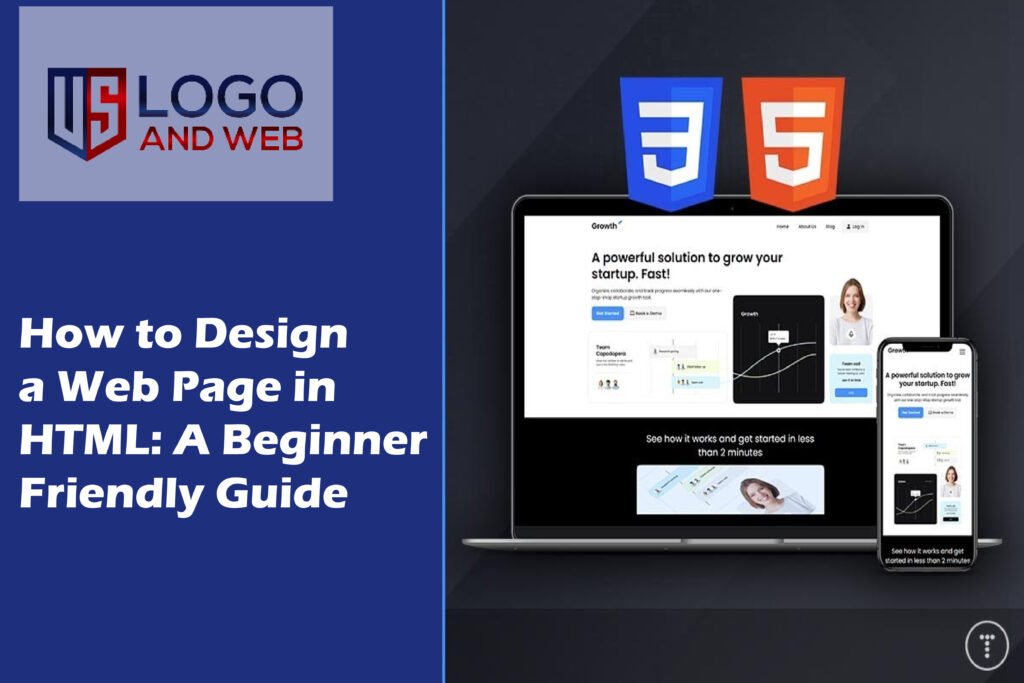Ever wondered how your favorite websites come alive on your screen? If you’re ready to dip your toes into website development, learning how to design a web page in HTML is your first step. Whether you’re dreaming of building your own blog or launching a business site, HTML is where it all begins. In this guide, I’ll break things down for you in simple English — no fancy jargon, no complicated tricks. Just practical steps, witty tips, and some personal insights to make your journey into HTML coding as smooth as butter. So, grab a coffee (or tea — no judgment here) and let’s get started!
Understand the Basics of HTML Structure
Before you get all excited typing away, you need to know what makes up a web page. Think of HTML as the skeleton of your site. It holds everything together, from headings to paragraphs to images.
HTML stands for HyperText Markup Language — it’s the standard language used to create website structure. If you’re wondering about web design basics or how to design a web page in HTML for beginners, start here. The basic layout includes tags like <html>, <head>, and <body>. These HTML elements create the framework for your content.
Get Familiar with HTML Tags and Elements
Let’s talk about HTML tags — the building blocks. Tags tell your browser how to display content. Want a heading? Use <h1>. Need a paragraph? That’s <p>. Easy, right?
When I first learned HTML coding, I was shocked by how simple the tags were. The real trick is knowing which tags to use and when. For example, <img> is for adding images to an HTML page, and <a> creates links. Master these, and you’re already ahead of the game.
Follow a Step-by-Step HTML Web Page Creation
- Open a plain text editor like Notepad.
Type your basic HTML structure:
php-template
CopyEdit
<html>
<head>
<title>My First Web Page</title>
</head>
<body>
<h1>Welcome to My Website</h1>
<p>This is my very first web page design.</p>
</body>
</html> - Save it as index.html.
- Open it in your browser.
Boom — you just created a website HTML file! Feels good, right?
Add Style: How to Link CSS to HTML
Okay, HTML alone looks pretty plain. If you want that trendy, stylish vibe (trust me, you do), you’ll need CSS. CSS is like picking out the right outfit for your website.
Here’s how you do it: create a CSS file (like style.css) and link it in your <head> using <link rel=”stylesheet” href=”style.css”>. Now, you can style your headings, paragraphs, and more. This is the secret sauce to transforming a simple HTML page into something visitors actually want to stick around for.
Make It Responsive and Modern
Ever opened a site on your phone and it looked awful? That’s what happens when you skip responsive design. Good news: creating a responsive web page using HTML and CSS isn’t rocket science.
Use the <meta name=”viewport”> tag in your HTML <head> to make sure your site adapts to different screen sizes. Combine that with flexible layouts and CSS media queries, and your site will look polished on any device. Follow best practices for HTML web design to keep things modern and user-friendly.
Add Navigation and Multimedia
No one likes getting lost online. That’s why a clean HTML navigation menu is a must. Use <nav> and <ul> tags to build simple menus that guide your visitors.
Want to add some visual flair? Embedding images or videos is simple. Use <img> for pictures and <video> for clips. Remember: keep file sizes small for faster load times. This is one of those small details that separates amateur sites from pro ones.
Optimize for SEO
What’s the point of building a site if no one finds it? SEO optimization for HTML websites is your golden ticket to visibility. Use headings (<h1>, <h2>), meta tags, and alt text for images.
Keep your HTML file structure explained clearly — search engines love tidy code. Add relevant keywords like HTML tutorial, HTML structure, and web design basics naturally throughout your content. That’s how you climb the ranks without shady tactics.
Frequently Asked Questions
Q: How do I design a simple HTML website example?
Start with basic tags like <html>, <head>, <body>, and add headings, paragraphs, and images. Save the file as .html and open it in a browser.
Q: What are some best practices for HTML web design?
Use semantic HTML tags, keep your code clean, test on different devices, and follow responsive design principles.
Q: How do I link CSS to HTML?
Add <link rel=”stylesheet” href=”style.css”> inside your <head> section.
Q: What is the HTML code for a landing page?
A landing page is just a single HTML file with clear sections, a strong headline, CTA buttons, and clean layout. Use simple tags and CSS for styling.
Q: How can I add a navigation menu in HTML?
Use <nav> with <ul> and <li> tags to create lists of links that serve as your site’s menu.
Final Reflections
Designing a web page in HTML might feel like learning a new language, but trust me — once you get the hang of HTML tags and structure, you’ll feel unstoppable. Remember, this is your playground. Experiment, break things, fix them — that’s how you learn.
If you’re serious about stepping up your web design basics, keep practicing and stay curious. I hope this little HTML tutorial helps you build something you’re proud of. And when you’re ready to take your website development to the next level, the team at US Logo and Web is always here to help you shine online.

